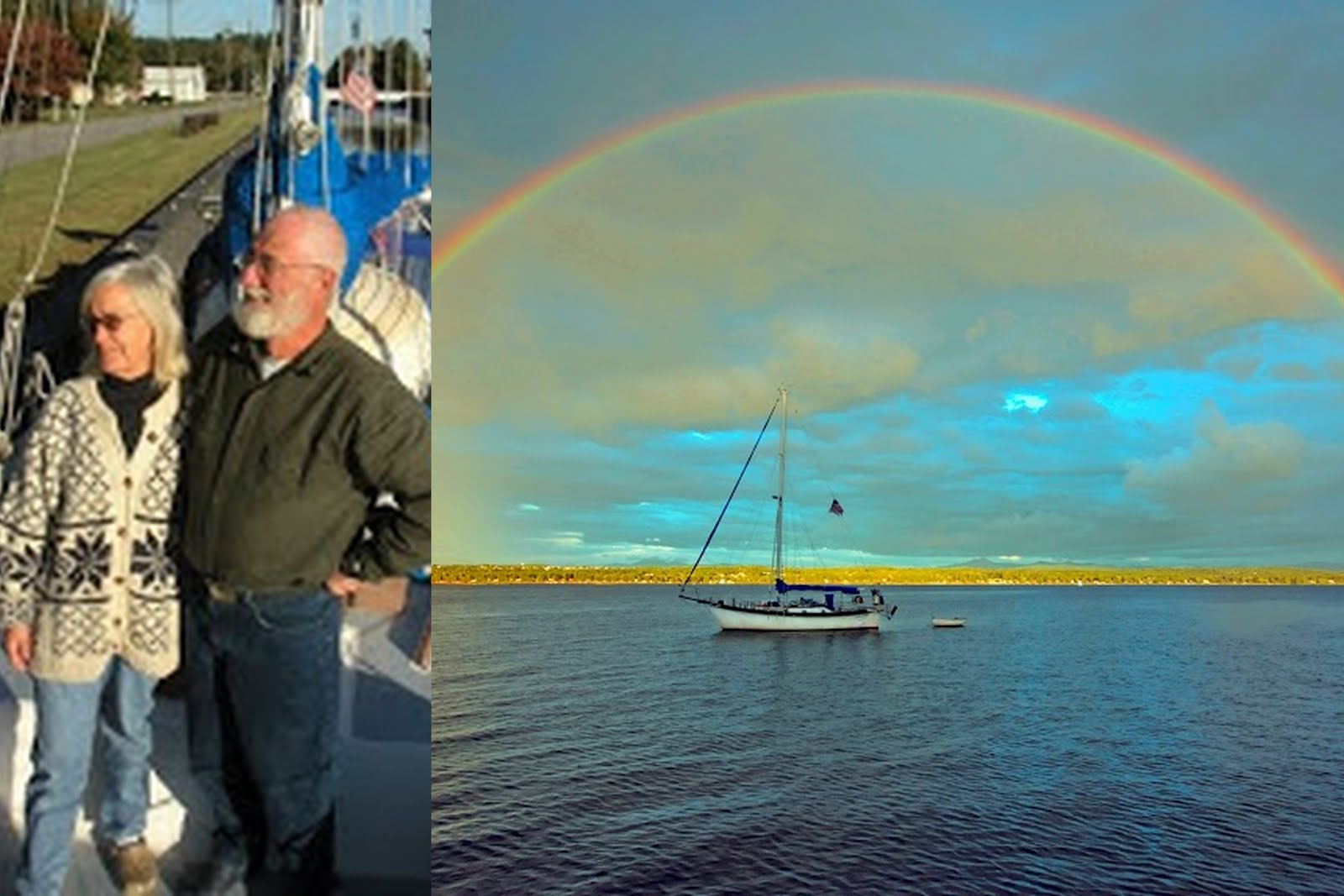34 42.54 N 081 05.58 W
Many long time sailors have never sailed at night. Too bad for them. It has a special magic.
First, of course, we think of blue water sailing. Those night watches at sea can be especially beautiful. What can be beautiful about the sea when you can't see? (no pun intended) First of all, you can see much more than you think. Moonlight, and even starlight makes in your night adapted eyes provides lots of light. Even when overcast, a lot of moonlight comes through the clouds. When we lack all of those lights, there is the phosphorescence of our wake. That is caused by bacteria that live in sea water. It's spooky and beautiful.
What does happen at night is that the colors disappear. All you see is many shades of blue and black. That's one of the reasons why navigation lights are red, green, and black, never blue.
Libby feels most confident in night watches because lights make ships and other vessels easier to spot at night than they are in daylight. The colors of the lights we see also provide guidance on which way the vessel is going.
If you're not out at sea though and you're sailing at night then you better know where you're going.
Last summer, Libby and I had a truly lovely evening out on Lake Champlain following a Mozart Concert that we listened to at anchor. The sky was clear, the winds were warm and gentle. We had to navigate past several shoals and islands. However, those waters were so familiar to us that we had no navigation anxiety at all. We could even recognize the tourist boats out for dinner cruisers. It was just beautiful and peaceful.
Thirty years ago I sailed from Stockholm to Västerås with my friend Sten-Örjan. The route was very hazardous. The course threaded and twisted around hundreds of islands. Submerged rocks were all around close to the channel boundaries. It was the age before GPS. However, the navigational aids were so numerous and so expert, that we could navigate precisely by sight. I felt very safe.
At one point, the sky and the lake were illuminated bright as day in brilliant green. It was caused by a large meteor passing overhead. I never looked up to see the meteor -- my gaze was fixed on the luminous green landscape and water as my brain tried to comprehend what was happening.
That same night, we made only one mistake, but it was a nearly fatal on. Under sail, we approached a point where the channel took a 90 degree turn to the right. As we came to the corner, a fast moving ship suddenly appeared coming the other way. I was on the helm. Sten-Örjan was captain, up in the bow. I turned to port, toward deep water on the left side of the channel (the outside of the turn) for a starboard-to-starboard passage. Sten-Örjan yelled, "No no. Go the other way." I obeyed instantly, reversing the turn to starboard. The ship responded with 5 blasts of his horn (the danger signal). It was pinching the corner. The ship forced us out of the marked channel into hard rock shoal areas. As it passed, the ship turned on its search light to see if it ran us over. Obviously we weren't run over because I'm here to tell about it, but the ship's light blinded us thus making things worse. Again luck was with us, we cut the corner blindly, but we never struck the rocks. Whew. (I guess that qualifies as being between a rock and a hard place:)
Burlington, Vermont. Boston, Mass. Manhattan, New York City. Atlantic City, New Jersey. Charleston, South Carolina. Miami, and Miami Beach. Florida. These are some of the cities that are especially pretty when seen from the water at night. Charleston has a large modern suspension bridge that we can see from 30 miles out, when the rest of the city is invisible. We like to anchor near Key Biscayne in Florida and gaze upon the magical nighttime skyline of Miami. Miami Beach is best seen from the ocean side. If you watch CSI Miami on TV, you'll see beautiful helicopter shots of Miami Beach at night -- they are no exaggeration.
On the other side of the coin. Sailing at night when navigation is a problem can be extremely stressful. As a matter of policy, we almost never travel at night on the ICW. It is poorly lit and not designed for night passages. An exception to that came last spring. We were in Daytona Beach heading north. There was severe shoaling reported near Matanzas Inlet. Therefore, I figured we had to pass the inlet at high tide. There was no safe anchorage closer than Daytona, so our only choice was to depart at 0400 in the morning. For almost three hours then, Libby and I threaded our way in the dark through the 100 foot wide dredged channels, using our chart plotter for electronic navigation and our hand-held-search-light for visual navigation. Of course there are lights everywhere you look but they all belong to land-based objects, not navigation aids. We were nervous wrecks by the time the sun came up. Don't ever do that if you can avoid it.





Nice post, Dick. Darned near poetic at times. Going off-shore and sailing at night are two landmark events for a sailor.
ReplyDeleteRandy
If you are looking for reading material (what sailor isn't?) and are near a library (what sailor is?) you might enjoy NIGHT FLIGHT by Antoine de Saint-Exupéry. Many of the same thoughts and observations.
ReplyDeleteRandy